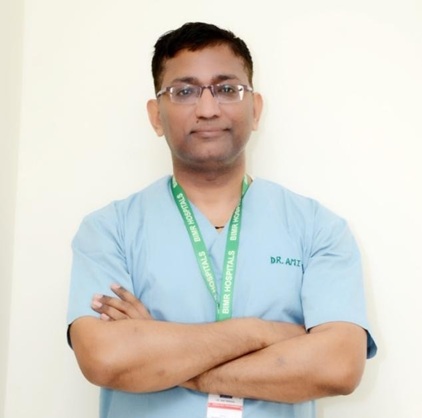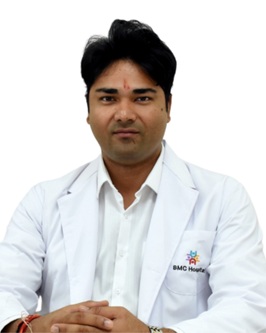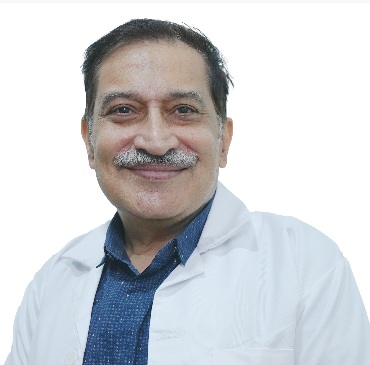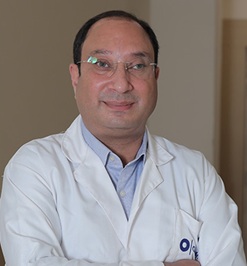Spine Non Surgical Treatment

Quick Summary
- The spinal cord is a thin, tubular, long structure of nerve tissue
- The spine is the central support structure of the body that sends nerve rootlets out into the body
- Back injuries and spinal cord problems can damage the spine and may cause back pain ranging from mild to severe
The spinal cord is a thin, tubular, long structure of nerve tissue. The spine is the central support structure of the body that sends nerve rootlets out into the body. It connects several parts of the musculoskeletal system. Your spine helps you bend, twist, sit and stand. Back injuries and spinal cord problems can damage the spine and may cause back pain ranging from mild to severe. Some parts of the spine are:
- Vertebrae
- Facet joints
- Intervertebral disks
- Spinal cord nerves
- Soft tissues
The five segments of the spinal cord are:
- Cervical
- Thoracic
- Lumbar
- Sacrum
- Coccyx
What are the Signs and Symptoms of Spinal Problems?
- Pressure on your neck, head, or back
- Lack of coordination, paralysis, or weakness in any part of your body
- Loss of sensation, numbness, or tingling in your hands, feet, fingers, or toes
- Loss of bowel or urinary control
- Loss of movement
- Abnormally rounded back or shoulders
- Radiating pain to the arms and legs
- Stiffness or tightness
- Intense pain caused by damage to your nerve fibres
- Difficulty in standing up straight
What are the Causes of Spinal Problems?
Up to 80% of people experience back pain at some point. Discs and vertebrae can wear down with age, causing pain. The conditions that affect spine health are:
- Lower back pain caused by arthritic conditions like “ankylosing spondylitis”
- Birth defects like “spina bifida” – caused by the incomplete development of the foetus’ spine during the first month of pregnancy
- Back sprains and strains
- "Osteophytes” or bone spurs – smooth, bony growths, usually near joints
- “Scoliosis” (a condition where the spine is curved sideways)
- Nerve injuries
- Osteoporosis (weak bones)
- Spinal cord injuries
- Spine tumours and cancer
- Accidents or falls
- Inflammation
What are the Risk Factors of Developing a Spine Disorder?
Some factors that can increase the risk of developing a spine disorder are:
- Overweight or obese
- Improper weight lifting techniques
- Sedentary lifestyle, low calcium intake, and smoking
- Spine problems due to conditions such as rheumatoid arthritis, thyroid disease, or osteoarthritis
- Repetitive strenuous activities
- Overuse from exercise or occupational movement
- Poor posture
- Falls cause more spinal cord injuries in older adults.
Myths vs. facts
Myth – Back pain always occurs due to serious injuries.
Fact – Most back problems develop over time and may result from some repetitive trauma or bad posture.
Myth – Extreme back pain indicates a serious problem.
Fact – If the lower back hurts, the symptoms can range from mild to moderate or severe. These symptoms may indicate a minor self-limiting problem, such as an overstretched ligament.
Prevention and disease reduction
You can prevent the risk of spinal injury by the following:
- Avoid falls from ladders.
- Use a seatbelt while driving to avoid accidents.
- Try doing back-strengthening and stretching exercises. Exercise to strengthen the core gives your spine more support.
- Wear your appropriate gear while playing sports.
When to See a Doctor?
You might need to reach out to your doctor post-surgery, so look out for the following symptoms:
- Back pain with fever
- Issues with bowel or bladder control.
- Weakness in legs or pain that travels down from your back to your legs
- Pain, nausea, or sleeplessness
- Numbness in the hands, feet, or legs
What are the Risks if not Treated in time?
- This can cause feelings of weakness, tingling, numbness, or radiating pain in the lower back, often moving to the buttocks and down to your legs.
- As this condition develops, you may also experience pain while walking or running, and most people find it eventually hard to walk even a few steps.
- Tightness or stiffness in the lower back area, restricting the range of motion.
- Difficulty in maintaining normal posture due to pain or stiffness.
- Muscle spasms occur either with activity or at rest.
Disease progression
The three phases of spinal degeneration are:
- Phase 1 – Spinal dysfunction can lead to
- Loss of curve
- Narrowing of disc spacing
- Impaired turning and bending
- Phase 2 – If ignored can deteriorate to
- Rough joint surfaces
- Bone spurs
- Reduced mobility
- Phase 3 – If neglected can degenerate to
- Severe bone remodelling
- Irreversible joint fusion
- Permanent loss of motion
How are Spinal Problems Diagnosed?
- The first step in diagnosing a spinal cord disorder is a physical examination of your spine and a review of your medical history.
- Your medical history is important, whether you are on some medications already or if you’re suffering from any underlying disease such as diabetes, hypertension, etc.
- An emergency diagnostic test may be needed. These tests include:
- X-rays: These can help in identifying a fracture or dislocation of vertebrae.
- Computed tomography (CT) scan: It is an advanced imaging test that can give the doctor a better view of the vertebrae.
- Magnetic resonance imaging (MRI): It is a more advanced imaging study that can identify a spinal cord injury.
How are Spinal Problems Treated?
Stages of treatment:
In an emergency room, your doctor will focus on:
- Maintaining your ability to breathe
- Preventing syncope
- Immobilising your neck to prevent further damage
- Avoiding possible complications, such as cardiovascular/respiratory difficulty, stool or urine retention, and formation of blood clots in the extremities
Medications:
To control muscle spasticity and pain, anti-relaxants (e.g. diazepam), antidepressants (e.g. paxil), and painkillers (e.g. ibuprofen) are given.
Immobilisation:
- Immobilise the spine quickly and gently use a rigid neck collar and a rigid carrying board.
- Immobilise the neck to prevent further damage. Use the traction technique to bring the spinal cord in proper alignment. The traction technique is used to realign a dislocated part of the body or a fractured bone using pulleys, weights, and ropes.
Rehabilitation:
The rehabilitation team can help you in the following ways:
- Learn to use assistive devices such as wheelchairs or walkers.
- Regain mobility or strength.
- Psychotherapy or counselling may help with emotional trauma.
- Use of adaptive devices for communication.
How to Prepare for the Doctor’s Consultation?
- Book a prior appointment with your doctor.
- Assemble your personal and family history.
- Get your past medical records and a detailed summary of all your daily medications with you.
- Make a list of all your symptoms
- In case you have any doubts or questions like:
- How to reduce my back pain at home?
- What are my treatment options?
- How much time will it take to recover?


Last Updated on: 12 December 2023
Reviewer

Dr. Aman Priya Khanna
MBBS, DNB General Surgery, Fellowship in Minimal Access Surgery, FIAGES
14 Years Experience
Dr Aman Priya Khanna is a well-known General Surgeon, Proctologist and Bariatric Surgeon currently associated with HealthFort Clinic, Health First Multispecialty Clinic in Delhi. He has 14 years of experience in General Surgery, Proctolo...View More
Author
HexaHealth Care Team
HexaHealth Care Team brings you medical content covering many important conditions, procedures falling under different medical specialities. The content published is thoroughly reviewed by our panel of qualified doctors for its accuracy and relevance.
Expert Doctors (10)
NABH Accredited Hospitals (4)
Latest Health Articles
Related Treatments




















 Open In App
Open In App